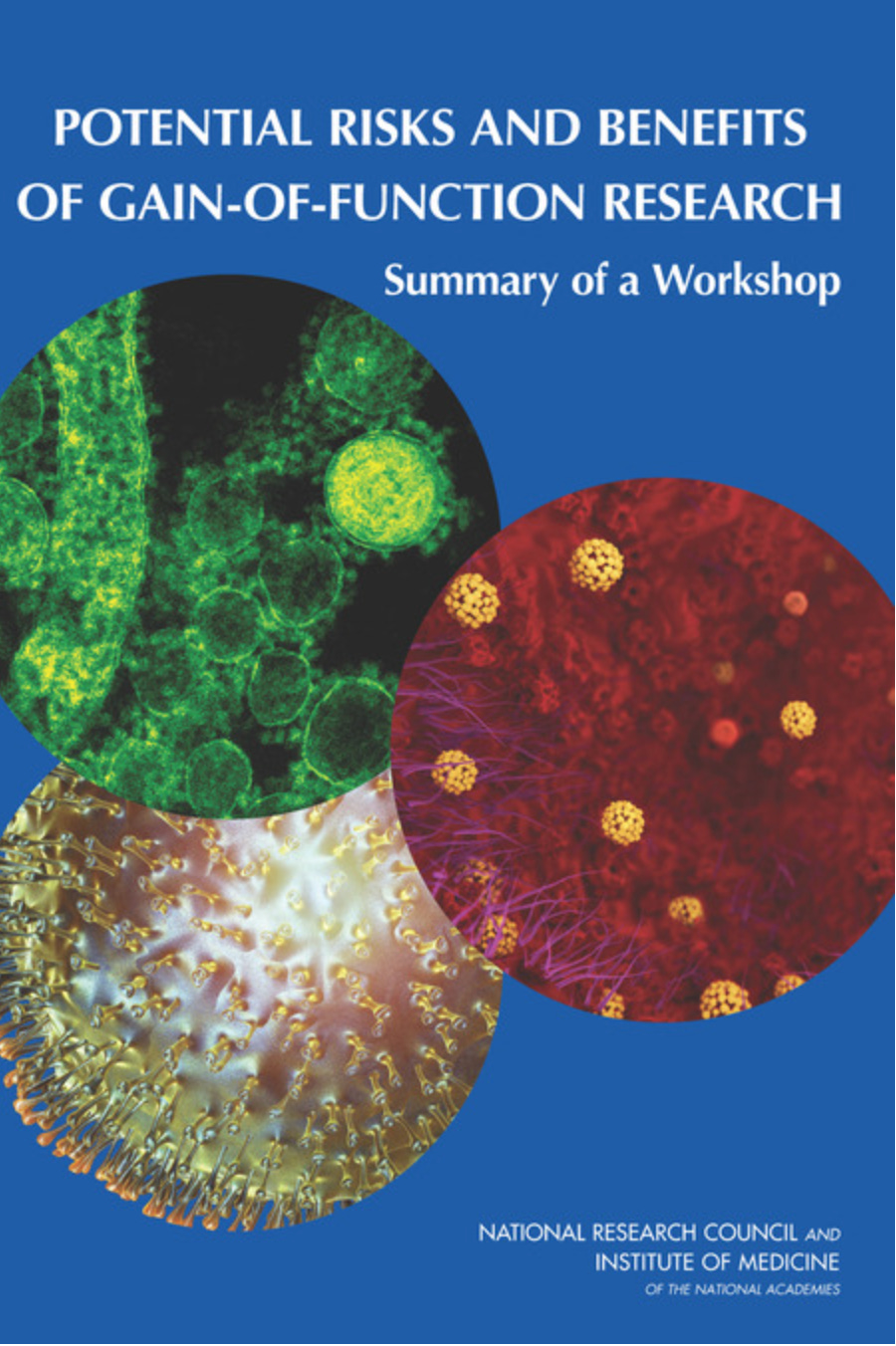“Gain of Function” and Influenza A Virus
The two have been intertwined for decades.

Cover art, “Potential Risks and Benefits of Gain-of-Function Research, Summary of a Workshop (2015)”
On October 17, 2014, spurred by incidents at U.S. government laboratories that raised serious biosafety concerns, the United States government launched a one-year deliberative process to address the continuing controversy surrounding so-called “gain-of-function” (GOF) research on respiratory pathogens with pandemic potential. The gain of function controversy began in late 2011 with the question of whether to publish the results of two experiments involving H5N1 avian influenza and continued to focus on certain research with highly pathogenic avian influenza over the next three years. The heart of the U.S. process was an evaluation of the potential risks and benefits of certain types of GOF experiments with influenza, SARS, and MERS viruses that would inform the development and adoption of a new U.S. Government policy governing the funding and conduct of GOF research.
“Those that fail to learn from history are doomed to repeat it.” – Winston Churchill
What is Gain of Function Research (GOF)?
There is no clear consensus regarding what constitutes GOF research. In the current political climate where the role of US Government (NIH/NIAID, DoD/DTRA, USAID and by implication CIA) in funding of what is clearly GOF research seeking to increase human infectivity of bat Coronaviruses has created an opportunity for stakeholders to sow confusion and ambiguity concerning what actually constitutes GOF research. Much of the resulting obfuscation has involved technical parsing of the definition of GOF in ways which conveniently support the interests of key stakeholders such as Dr. Peter Daszak and his EcoHealth Alliance organization, as well as Dr. Anthony Fauci and his famous denial and attack on the credibility of Senator Rand Paul during congressional testimony.
…click on the above link to read the rest of the article…